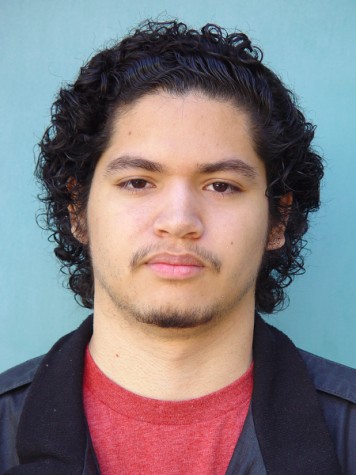Famed physicist Dr. Kip S. Thorne informed attendees in the campus auditorium Tuesday of the warped side of the universe and provided the quest to probe it with gravitational waves.
Thorne, the Feynman Professor of Theoretical Physics of Caltech, spoke of objects and phenomena that are made from warped space and warped time. Two examples are black holes and the big-bang singularity in which our universe was born.
Thorne’s research was focused on Einstein’s general theory of relativity with an emphasis on relativistic stars, black holes and gravitational waves. He is cofounder of the Laser Interferometer Gravitational Wave Observatory (LIGO) Project, and as a current member of this association, he is trying to test Einstein’s theory of relativity.
LIGO, which is operated by MIT and Caltech, is a facility dedicated to the detection of cosmic gravitational waves and the measurement of these waves for scientific research. It consists of widely separated installations around the world, including Louisiana, Washington, Japan and France among others and is operated in unison as a single observatory.
This observatory is available for use by the world scientific community, and is a vital member in a developing global network of gravitational wave observatories.
Poghos Kazarian, professor of general physics on campus, states that with multiple stations around the world, it is hard for them all to be wrong at the same time.
With the help of LIGO, Thorne is trying to confirm Einstein’s prediction of gravitational waves. He is also a member of the Laser Interferometer Space Antenna (LISA) International Science Team.
The primary objective of LISA is to search for gravitational waves, but also serves in studying black holes, testing Einstein’s theory of relativity and probing the early universe.
LISA is the first dedicated space-based gravitational wave observatory. So far the only space searches for gravitational waves have been made using measurements of radio signals, not ideal for gravitational wave searches from spacecraft on their way to other planets.
LISA may provide answers to the following questions: how did the universe begin? Does space have edges? Does time have a beginning and an end?
One difference between LIGO and LISA (besides the fact that one is ground-based and the other is space-based) is that LIGO uses higher frequencies that LISA.
Kazarian states that finding gravitational waves is important because it helps us to “see the universe in a new light.” In addition, gravitational waves cannot be blocked and thus are considered the “ultimate X-ray” of our universe. This can help solve many mysteries that surround our universe today.
The lecture discussed the warping of time and how time slows down when it is near Earth by a very small fraction. The warping of time is used in technology today such as GPS, and without it, the GPSs would go down and not function in as quickly as 10 minutes.
Thorne listed the tools for exploring the warped side of the universe as well as how gravitational waves are detected. One of the methods for detecting those waves is called “GW Interferometer” which is very precise.
Thorne also discussed what numerical simulations are (numerical relativity) which have been under development since the 1960s and have experienced big success in the past four years.
The collisions of black holes, which are the most violent events in our universe, were originally planned in Thorne’s presentation in a video. Unfortunately, the video did not show due to technical difficulties. Thorne improvised while his computer rebooted. Luckily, it finally worked and was met with a supportive applause.
Aside from being an expert in his field, Thorne, in collaboration with Steven Spielberg and Jonathan Nolan (writer for “The Dark Knight”), have announced that they will be working on a movie called “Interstellar” which is an exploration of Thorne’s theories of gravity fields, wormholes and several hypothesis that Albert Einstein was never able to prove. The movie is scheduled for release in 2011.
Thorne was a student of John Archibald Wheeler (1911-2008), who was an eminent American theoretical physicist. One of the later collaborators of Albert Einstein, he tried to achieve Einstein’s vision of a unified field theory. He is also known for having coined the terms “black hole” and “wormhole” and the phrase “it from bit.”
Thorne was elected to the American Academy of Arts and Sciences in 1972, the National Academy of Sciences in 1973, the Russian Academy of Sciences and the American Philosophical Society in 1999.
He has been awarded the Lilienfeld Prize of the American Physical Society, the Karl Schwarzschild Medal of the German Astronomical Society and the Commonwealth Award for Science, and was named California Scientist of the year in 2004.
For his book for non-scientists, “Black Holes and Time Warps: Einstein’s Outrageous Legacy” (Norton Publishers, 1994), Thorne was awarded the American Institute of Physics Science Writing Award, the Phi Beta Kappa Science Writing Award, and the Russian Priroda Reader’s Choice Award. In 1973, Thorne co-authored the textbook “Gravitation,” along with Wheeler and Charles Misher from which most of the present generation of scientists has learned general relativity theory.
Approximately 50 physicists have received a doctorate at Caltech under Thorne’s personal mentorship.
The science lecture series is coordinated by Dr. Sid Kolpas. The next lecture will be held on May 26 featuring guest speaker Franco Reyna, in “Diabetes: The Silent Killer.” It will be free and open to the public.
For more information about the GCC science lecture series, call (818)-240-1000.


